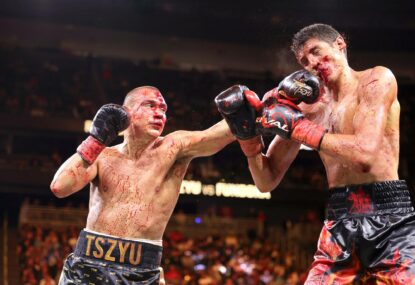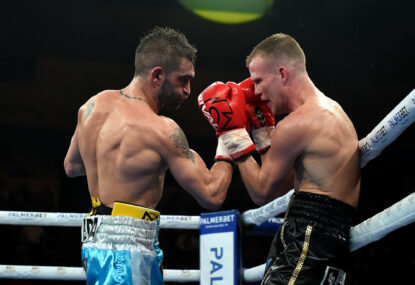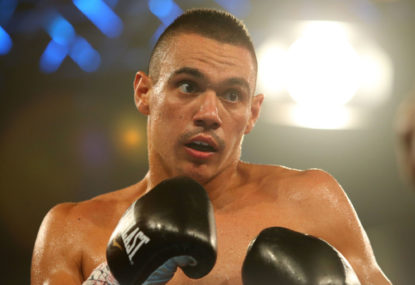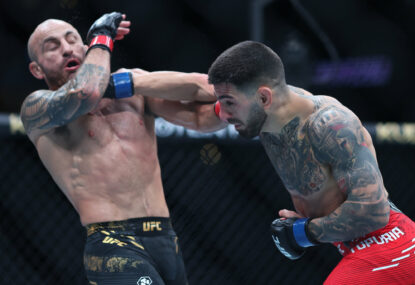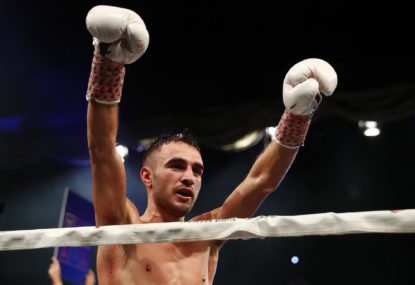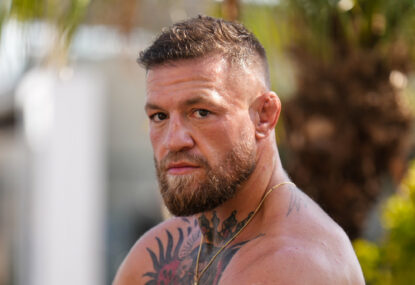
The UFC has recently seen two of its most hyped cards of 2011 decimated through injury. UFC 130 was dealt a massive blow when the much anticipated rematch between Frankie Edgar and Gray Maynard was postponed due to injuries to each fighter.
UFC 131 has also seen a main event fall through, with Brock Lesnar pulling out of his fight with Junior Dos Santos due to a re-occurrence of diverticulitis.
Add this to the fact that UFC heavyweight champion Cain Velasquez and UFC light-heavyweight champion Jon Jones are also on the shelf with long term injuries, it begs the question, does the increased injury toll mean anything? Or is it simply a coincidence?
The sports of boxing and MMA are vastly different beasts to any other, and therefore so is the training. In AFL and rugby league, you can simulate pressure in a controlled environment, without contact or with as little contact as possible.
In boxing and MMA, you are not afforded such a luxury. Sure, fighters wear headgear and wear thicker gloves, but it doesn’t stop the cuts, KOs and contusions from happening.
Fighters can not exactly pull their punches. If you get hit in the face it still hurts and once hit in the face, that natural reaction is to simply punch back… hard.
I have seen and been in enough sparring session to know that they is no “taking it easy”. When training before a big fight, in any gym, there is only one gear – full throttle.
Often, sparring partners want to make a name for themselves by knocking out the champ or often the sparring partner may have a fight of their own they are preparing for.
This is particularly common in MMA, where camps can have any amount of fighters appearing on multiple fight cards for multiple brands, at any given time.
Most fighters will tell you that they never go into a fight 100 per cent fit. In every training camp, some damage is done. Getting hit in the face, on a daily basis for upwards of twelve weeks prior to a fight, is going to damage something.
You throw in the added training that MMA fighters have to go through, such as Jiu-Jitsu, wrestling and submission, and the toll on the body is enormous.

This is on top of cutting weight and conditioning the body to its peak. Eventually something is going to break.
The biggest fight in history almost was canceled after George Foreman received a cut to the eye in sparring before the ‘Rumble in the Jungle’ against Muhammad Ali.
The fight went on, although just, some eight weeks later.
It’s not uncommon for fighters to get injured and the latest incidents in the UFC have been highlighted just to the sheer coincidence of a few injuries happening all together.
The UFC puts on so many shows these days, has such a vast roster of fighters and is such a demanding sport that this will not be a one-off.
Maynard and Edgar, it could be argued, were not afforded enough time to heal from their injuries.
Before they met in their second fight, a number one contender, Anthony Pettis, was established to meet the winner.
Given their fight was a draw, this delayed Pettis getting a shot and created a logjam in the division and a change of plans.
Ultimately it was decided that Pettis would wait to fight the winner, and Maynard-Edgar III would happen as soon as possible to get things rolling along again in the lightweight division.
Sure, the UFC may have pressured each to take the fight with little recovery time, but fighters can be swayed with a large purse, world titles and hype surrounding a fight such as theirs.
Neither fighter would want to sit on the sidelines whilst opportunity knocks; knowing what can happen in the fight game. One punch can change everything.
Regarding the injuries of Jones and Velasquez, what’s to say they didn’t carry significant injuries into their title fights knowing that if they chose to sit it out they would rejoin the back of the queue, when both Jones and Velasquez had been fighting their way to the title for the past two years?
Brock Lesnar is experiencing that exact ordeal at the moment. He has had to have surgery for diverticulitis and will be out until 2012.
Who knows what will happen in the heavyweight division by that time.
Sure there are pressures by the organisations, TV networks and sponsors to fight, but the most pressure is arguably attributed by the fighter themselves.
Because at the end of the day, if you don’t fight, you don’t get paid.
And after three months of busting your ass in the gym and getting beat up, it’s going to take a lot to pull out of a fight.
There could be an argument for more stringent physical testing. Although medical testing prior to a fight is thorough, in regards to neurological testing and vision, having had to have a pre-fight medical myself, short of having a limb missing you can generally get through them with minimal fuss.
Heck, the fact that Roy Jones and Evander Holyfield still manage to pass medicals says something.
Rampage Jackson admitted after his fight with Matt Hammil, just last week that he carried a fractured hand into the fight that had been plaguing him for months. Pre-fight medical failed to pick that one up.
Finally though, another reason relating to the potential injury “crisis” could be simply the rise and rise of MMA. More money in the sport has allowed fighters to take longer training camps, with specialist trainers to ensure their bodies are in peak condition. They have embraced sport science to ensure they can hit harder and faster, for longer.
The after effects of that are going to show somewhere. In the fight game, sadly injuries happen. It’s the nature of a physical sport, where the winner is usually attained from inflicting the most damage on their opponent.
So to talk of an “injury” crisis may be a little premature, the recent injuries are simply the nature of the beast.































































































